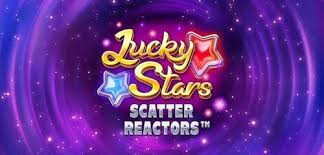Unlocking the Wonders of LUCKY STAR
In the vast landscape of anime and manga, few series stand out as brightly as LUCKY STAR Visit site. This charming series, known for its unique blend of humor, relatable characters, and vibrant animation, has captured the hearts of fans around the world. Whether you are a seasoned anime enthusiast or a newcomer to the genre, LUCKY STAR offers something for everyone. In this article, we will explore the origins of LUCKY STAR, its memorable characters, cultural impact, and the reasons behind its lasting popularity.
The Origins of LUCKY STAR
LUCKY STAR first appeared as a manga series written and illustrated by Kagami Yoshimizu in 2004. The manga’s slice-of-life storytelling centers around the day-to-day lives of four high school girls: Konata Izumi, Tsukasa Hiiragi, Kagami Hiiragi, and Miyuki Takara. The series initially ran in the manga magazine “Comp Ace” and quickly garnered a dedicated readership due to its light-hearted humor and clever references to otaku culture.
In 2007, LUCKY STAR was adapted into an anime television series by Kyoto Animation, which further cemented the series’ popularity. The anime retained the manga’s charming humor while adding vibrant animation and catchy opening themes. The combination of relatable characters and everyday situations resonated with audiences, leading to a spectacular increase in LUCKY STAR’s fanbase.
Characters That Captivate

The heart of any successful series lies in its characters, and LUCKY STAR is no exception. Each of the main characters embodies unique traits that fans can identify with:
- Konata Izumi: The quintessential otaku, Konata is witty, energetic, and unapologetically passionate about anime and video games. Her laid-back attitude often leads her friends into amusing predicaments, making her a fan favorite.
- Tsukasa Hiiragi: The sweet and somewhat naive twin sister of Kagami, Tsukasa is known for her clumsiness and endearing personality. Her innocence often provides a contrast to the more cynical remarks of her friends.
- Kagami Hiiragi: Tsukasa’s serious twin, Kagami often plays the role of the straight man in their interactions. Her sharp tongue and no-nonsense attitude add depth and humor to the dynamic within the group.
- Miyuki Takara: The intelligent and polite member of the group, Miyuki is known for her vast knowledge and gentle demeanor. Often acting as the voice of reason, her character brings balance to the rambunctious interactions of her friends.
These characters not only anchor the series but also exemplify the relatable experiences of everyday life, making LUCKY STAR resonate with viewers of all backgrounds.
Cultural Impact and Legacy
LUCKY STAR’s impact on pop culture cannot be overstated. The series has inspired numerous memes, fan art, and even merchandise. Its memorable catchphrases and iconic visual gags have become ingrained in otaku culture, often referenced across various media platforms.
The “Lucky Star” pose, for instance, has been widely imitated by fans at conventions, showcasing its influence in the cosplay community. Moreover, the series has encouraged discussions surrounding the daily lives of otaku and the related subculture, exploring themes of friendship, humor, and the challenges of adolescence.
Additionally, LUCKY STAR has often been credited with contributing to the popularity of “moe” culture—a style of animation characterized by cute and endearing characters. The success of LUCKY STAR has opened doors for similar slice-of-life series that emphasize character development and everyday scenarios over complex plots.

The Enduring Appeal of LUCKY STAR
One of the most compelling aspects of LUCKY STAR is its timeless humor. Unlike many anime series that rely on fast-paced story arcs or dramatic plot twists, LUCKY STAR thrives on the simplicity of daily life and the sometimes absurd situations that arise from it. This ability to find humor in the mundane is what allows the series to remain relatable across generations.
Moreover, LUCKY STAR has excelled in creating a sense of nostalgia for its viewers. For many fans, watching Konata and her friends navigate high school life is a comforting reminder of their own experiences. The series encourages viewers to appreciate the small moments of life—a theme that resonates deeply in today’s fast-paced world.
Fans have also appreciated the clever incorporation of popular culture references within the series, which not only enrich the storyline but also provide comedic gold that resonates with a broad audience. By referencing other anime, video games, and Japanese culture, LUCKY STAR creates a bridge between the series and its fans, fostering a deeper engagement with the characters and the narrative.
Conclusion: Celebrate the Charm of LUCKY STAR
As we reflect on the legacy of LUCKY STAR, it is clear that this charming series has made a significant impact on both the anime community and pop culture at large. Its relatable characters, humorous storytelling, and cultural references continue to delight fans, making it a staple in the world of anime. Whether you are revisiting the series for the nth time or just experiencing it for the first time, LUCKY STAR is guaranteed to bring a smile to your face.
In a world filled with complexities, sometimes all we need is a little humor and a reminder of the joys of friendship. LUCKY STAR delivers on both fronts, securing its place as a beloved classic that will continue to spark joy for years to come.
Leave a Reply